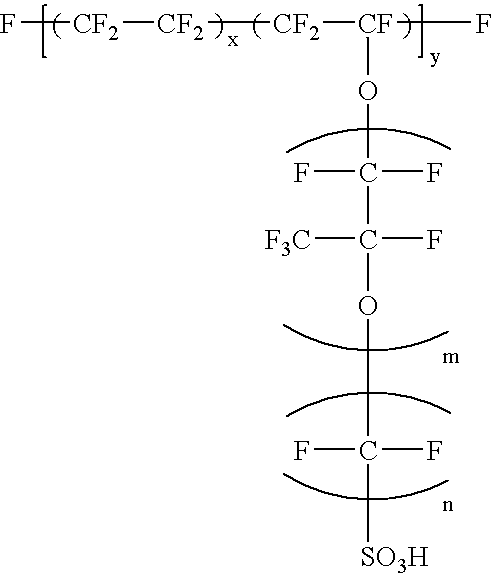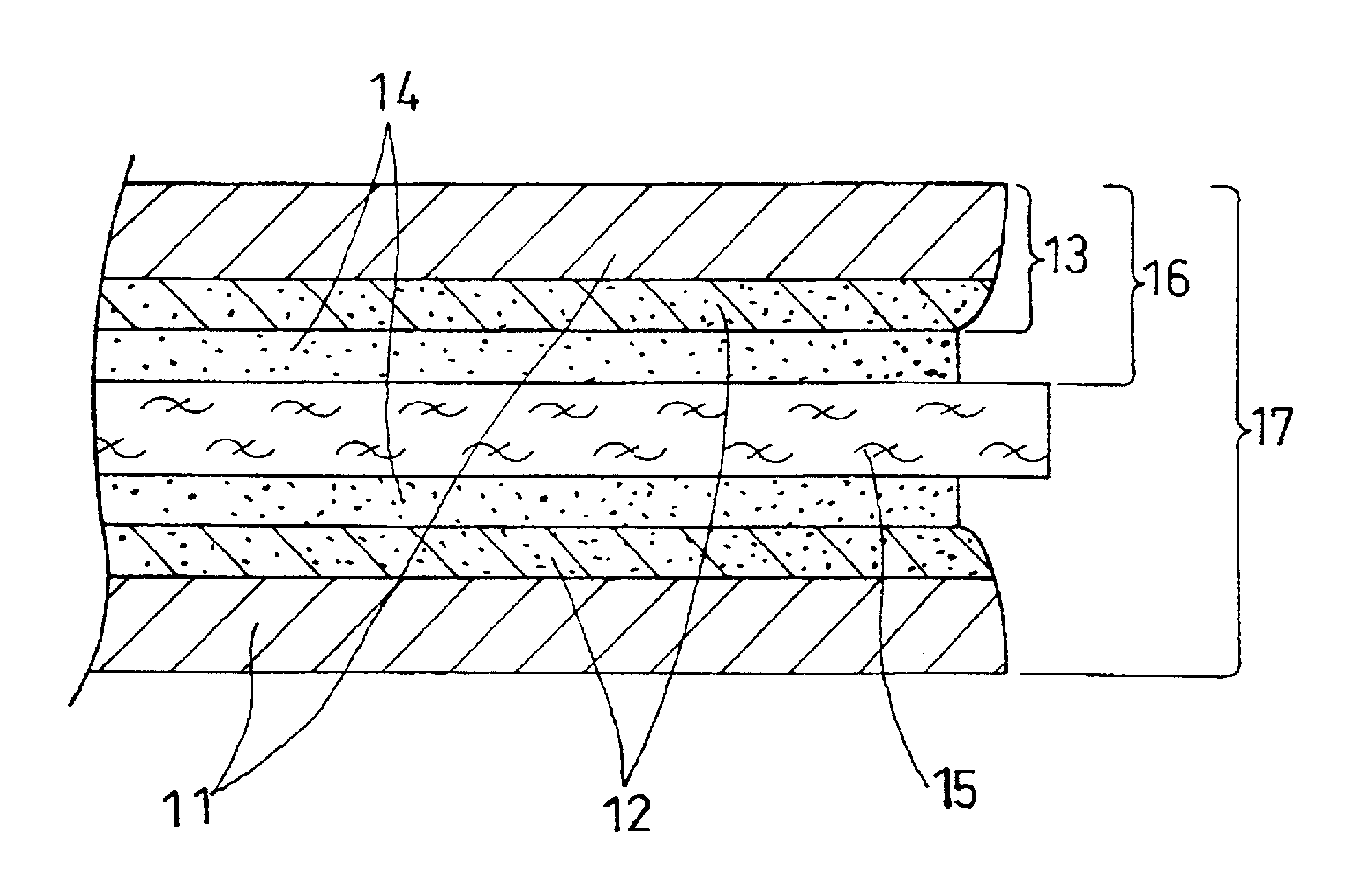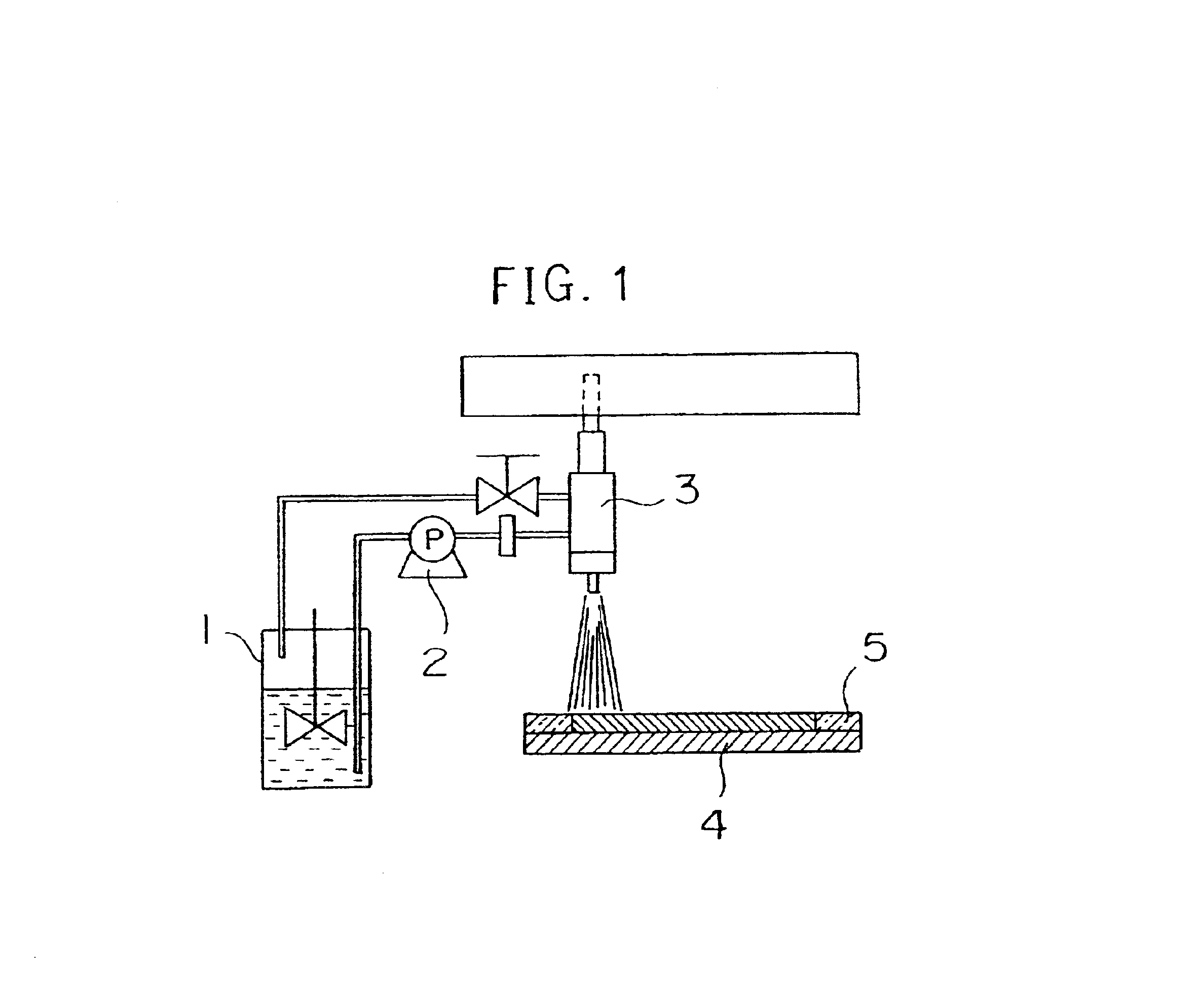Polymer electrolyte type fuel cell
a fuel cell and electrolyte technology, applied in the field of polymer electrolyte type fuel cells, can solve the problems of unfavorable smooth gas supply, sweating inside the cell, and the inability to efficiently remove product water, so as to improve the gas diffusion ability in the cathode, improve the gas diffusion ability, and reduce the effect of water absorbing capacity
- Summary
- Abstract
- Description
- Claims
- Application Information
AI Technical Summary
Benefits of technology
Problems solved by technology
Method used
Image
Examples
example 2
The ND-1 dispersion, a dispersion of conductive fine particles (including 100 g of Denka Black manufactured by DENKI KAGAKU KOGYO KABUSHIKI KAISYA, 900 g of water, and 2 g of a surfactant Triton X-100), and carbon paper were set in a spray coating device shown in FIG. 3, and a carbon layer as the conductive fine particle layer was produced on the carbon paper constituting the gas diffusion layer.
The ND-1 dispersion charged in a vessel 6 and the carbon dispersion charged in a vessel 7 were continuously stirred with a stirring blade, respectively. The ND-1 dispersion in the vessel 6 was pressed into a spray nozzle 9 by means of a pump 8, while the carbon dispersion in the vessel 7 was pressed into a spray nozzle 3 by means of a pump 10. Non-used remaining ND-1 dispersion and carbon dispersion were circulated and collected in the corresponding vessels. The spray nozzles 3 and 9 were disposed to be close to each other, and each nozzle was scanned two-dimensionally at an arbitrary rate b...
examples 3 to 7
An MEA 17 having the structure shown in FIG. 5 was manufactured first in Example 3. A catalyst for electrode was prepared by making platinum particles having the mean particle diameter of approximately 30 .ANG. carried on carbon powder (Vulcan XC72 manufactured by Cabot Corporation, the USA: primary particle diameter: 30 nm, specific surface area: 254 m.sup.2 / g, DBP absorption: 174 cc / 100 g) at 25% by weight. An isopropyl alcohol dispersion solution of this catalyst powder was mixed with an ethyl alcohol dispersion of perfluorocarbon sulfonate powder expressed by Formula (1): ##STR1##
where 5.ltoreq.X.ltoreq.13.5, y.apprxeq.1000, m=1 and n=2, to give a catalyst paste.
On the other hands, carbon paper as a conductive porous base material constituting the gas diffusion layer of the electrode was subjected to water-repellent treatment. Non-woven carbon fabric 11 having the thickness of 360 .mu.m (TGP-H-120 manufactured by Toray Industries, Inc.) was impregnated with an aqueous dispersio...
examples 8 to 10
An electrode including a catalyst layer and a gas diffusion layer was manufactured. Acetylene Black powder with 25% by weight of platinum particles having the mean particle diameter of approximately 30 .ANG. carried thereon was used for the catalyst for electrode. An isopropyl alcohol dispersion of this catalyst powder was mixed with an ethyl alcohol dispersion of the above perfluorocarbon sulfonate powder expressed by Formula (1) to give a catalyst paste.
Carbon paper as a conductive porous base material constituting the gas diffusion layer of the electrode was subjected to water-repellent treatment. Acetylene black was dispersed in an aqueous dispersion of fluorocarbon resin (Neoflon ND-1 manufactured by Daikin Industries LTD.) to yield a slurry (fluorocarbon resin solid matter:Acetylene Black=1:1 (ratio by weight)). This slurry was applied on non-woven carbon fabric 11 having the thickness of 360 .mu.m (TGP-H-120 manufactured by Toray Industries, Inc.), dried, and heated at 380.de...
PUM
 Login to View More
Login to View More Abstract
Description
Claims
Application Information
 Login to View More
Login to View More - R&D
- Intellectual Property
- Life Sciences
- Materials
- Tech Scout
- Unparalleled Data Quality
- Higher Quality Content
- 60% Fewer Hallucinations
Browse by: Latest US Patents, China's latest patents, Technical Efficacy Thesaurus, Application Domain, Technology Topic, Popular Technical Reports.
© 2025 PatSnap. All rights reserved.Legal|Privacy policy|Modern Slavery Act Transparency Statement|Sitemap|About US| Contact US: help@patsnap.com



